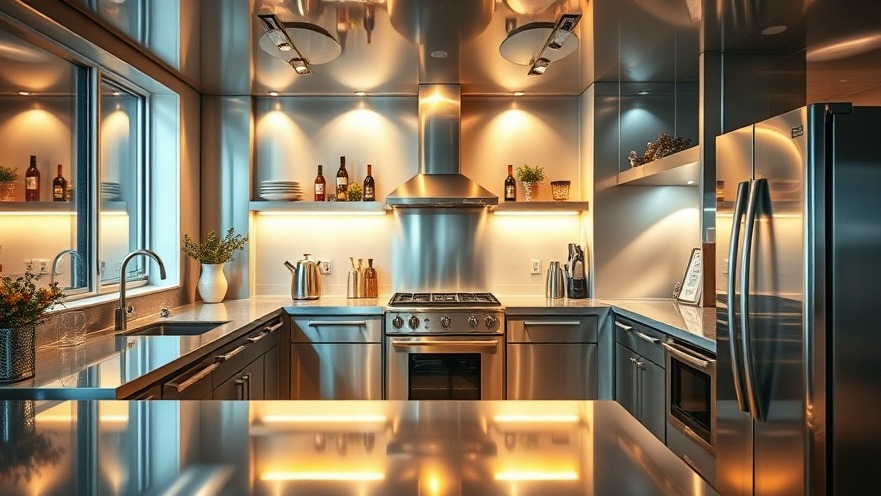
Introducing the All-Metal Kitchen: A Sustainable Trend for Remote Workspaces
As digital nomads strive to create efficient and aesthetically pleasing workspaces, kitchen design is becoming crucial in developing functional environments. One emerging star is the Ark T5 kitchen by South Korean brand Vobia, recently spotlighted in the Dezeen Showroom New Releases newsletter. This all-metal kitchen not only boasts a stainless steel island and wall units but is crafted with a rough surface finish that embraces wear over time, reflecting a shift towards sustainability and practicality in modern design.
Why All-Metal is the Future of Kitchen Design
The 2025 kitchen trends are increasingly focused on multifunctionality, blending elements that cater to both cooking and office work. With a durable kitchen like the Ark T5, remote professionals can enjoy a space that not only functions for meal prep but doubles as a stylish backdrop for virtual meetings. As sustainability becomes a major purchasing factor, opting for materials like stainless steel can enhance longevity while contributing to a lower carbon footprint.
Durability Meets Aesthetic Appeal
The aesthetic of all-metal kitchens infuses a modern industrial vibe that resonates well with the millennial and Gen Z demographics of digital nomads. This kitchen design embraces imperfections, with its surface being specifically designed to age gracefully. As reported in recent articles from Decorilla, the use of sustainable materials continues to trend upward. Homeowners and workers alike are opting for beautiful yet robust designs that withstand the wear and tear of daily life.
Top Features to Look for in Your Next Kitchen
When looking to remodel your kitchen—or perhaps create an inspiring workspace within your home—consider these features:
Smart Technology: Integrating technology into your kitchen design can streamline tasks. Smart appliances that can be controlled via apps and voice commands are essential for enhancing convenience.
Durable Surfaces: In addition to metal finishes, keep an eye out for natural stone countertops. These materials are durable and bring timeless elegance into your space, making them suitable for both culinary and professional activities.
Innovative Storage Solutions: Multi-functional islands equipped with extra storage help keep your workspace organized. A clutter-free environment fosters productivity and a clear mind.
Ample Natural Light: Incorporating large windows or skylights can uplift your mood and keep your workspace bright, ideal for remote workers who spend long hours in the kitchen.
Designing for Wellness and Productivity
For those working remotely, your space should encourage productivity and wellness. Ergonomic design must be at the forefront; for example, considering adjustable seating in your kitchen can help enhance comfort while you work. Also, utilize natural materials that not only elevate the aesthetic but also improve air quality in your home.
Actionable Steps for Your Kitchen Revamp
Creating an efficient and personalized kitchen workspace can be simplified by following a few actionable steps:
Evaluate your workspace: Identify areas where kitchen needs might merge with your work tasks.
Test for ergonomics: When choosing appliances and furniture, ensure they suit your height and working style to promote comfort.
Prioritize sustainability: Select materials like reclaimed wood or eco-friendly finishes that reduce your environmental impact.
Conclusion: Embrace the New Era of Kitchen Design
Investing in a versatile kitchen design not only enhances your cooking experience but also contributes to your overall well-being as a remote worker. The all-metal kitchen trend speaks to the evolving needs of digital nomads, providing both style and sustainability. As kitchen layouts are reinvented for 2025, now is the perfect time to embrace changes that will inspire both productivity and comfort in your remote workspace.
Take the leap towards creating your ideal remote workspace! Start planning your kitchen revamp today by exploring options that accommodate your work-from-home needs, and make a space you love from cooking to meeting.
 Add Row
Add Row  Add
Add 




Write A Comment